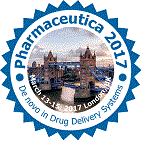
Andreas Bernkop-Schnürch
University of Innsbruck, Austria
Title: Oral Delivery of Biologics – Back to the Roots
Biography
Biography: Andreas Bernkop-Schnürch
Abstract
Within of the last decade biologics became the new, pioneering generation of therapeutics in treatment of numerous diseases. Their fast majority, however, is working through the parenteral route being less accepted and inconvenient, as the oral route for administration of biologics emerged to be problematic mostly due to the enzymatic barrier (I), the mucus gel barrier (II) and the absorption barrier (III) of the GI-tract. To overcome these barriers, a huge variety of strategies were established. Among these different strategies, lipophilic emulsifying delivery systems - having already been established more than 30 years ago for the oral administration of the peptide drug cyclosporine - are nowadays attracting more and more academic and industrial research groups, as the number of encouraging in vivo data and late stage clinical trials is strongly increasing. Among lipophilic emulsifying delivery systems in particular self-emulsifying drug delivery systems (SEDDS) are in focus of research and development. Despite their hydrophilic character biologics can be incorporated in the lipophilic phase of SEDDS via complexation with lipophilic excipients. Once emulsified in the GI-tract to lipid droplets in the size of 30-200 nm, SEDDS provide a protective effect towards a presystemic metabolism without taking the risk of any side effects. Furthermore, SEDDS exhibit comparatively high mucus permeating properties and can be taken up by epithelial cells in an efficient manner. Moreover, SEDDS can be produced very simply and cost effectively. Because of these properties they seem to be a promising tool for oral administration of biologics.

